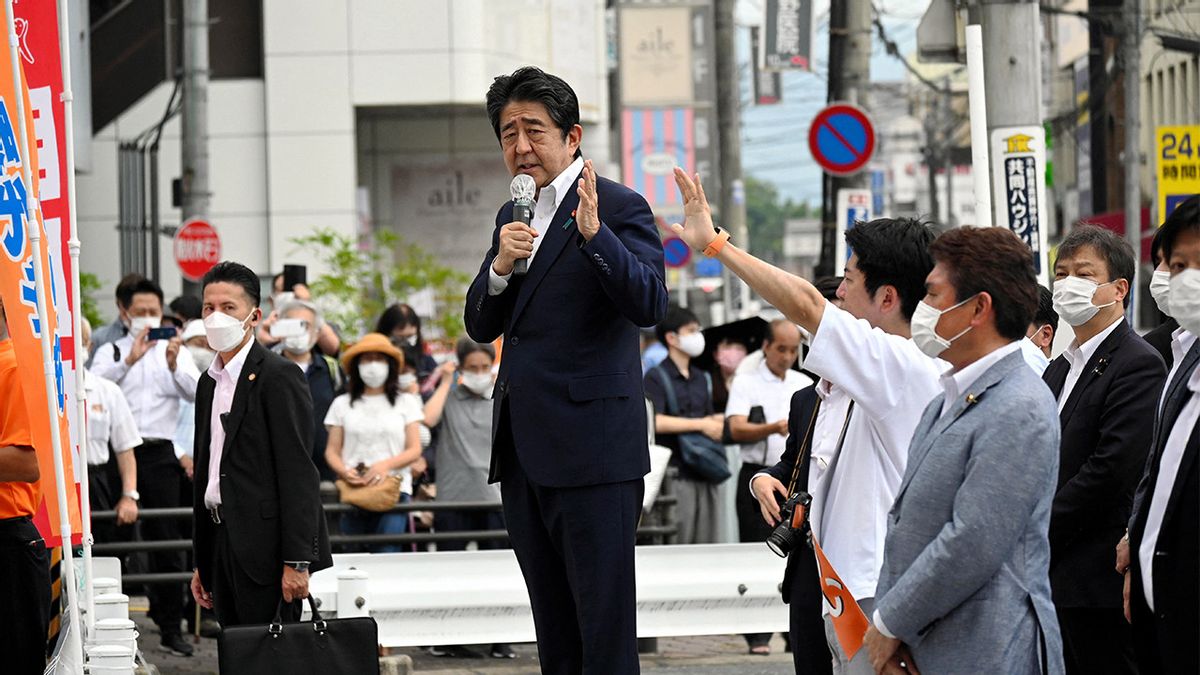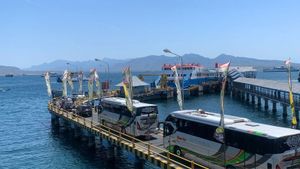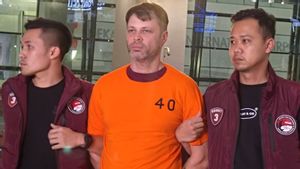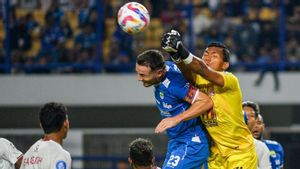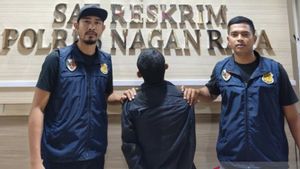JAKARTA The news of former Japanese Prime Minister (PM) Shinzo Abe's death came as a surprise. Abe died after being shot by a man named Yamagami Tetsuya during a public speech in Nara, a city east of Osaka on Honshu Island on July 8, 2022.
The tragedy is truly extraordinary, considering that Japan is a country that is very strict in arms surveillance. Since losing war, Japan has also proclaimed itself as a country of peace and non-violence.
Shinzo Abe's incident reminds the world community of days of violent politics in Japan, before World War II. At that time, a series of assassinations against top Japanese political figures became commonplace.
Starting in 1921 when PM Takashi Hara was stabbed to death at Tokyo Station by a young Japanese rail company employee named Nakaoka Kon'ichi on November 4. Hara was the first prime minister not to come from a political dynasty in Japan. He came from ordinary people, as well as the first Christian politician to become the Prime Minister of Japan.
Peaceful Hara is not popular with Japan's conservatives and ultranationalists, who at that time were excited to inflame imperialism and war. Hara actually brought Japan to participate in the Paris Peace Conference and co-founded the United Nations League to end World War I.
In 1930 violence against political leaders in Japan was repeated. This time happened to PM Osachi Hamaguchi. Like Hara, Hamaguchi was also shot by an ultranationalist sympathizer man named Tomeo Sagoya at Tokyo Station on November 14. Hamaguchi died a few months after the shooting, due to severe injuries that had an impact on his health.
Two years later, similar incidents happened again. This time happened to PM Tsuyoshi Inukai. A total of 11 young Japanese naval officers stormed PM Inukai's residence in Tokyo on May 15, 1932. Inukai's relationship with the Japanese military was not close, because she was against the war. Meanwhile, the Japanese military at that time was determined to fight against the United States.
The Japanese Navy's 11 young assault was actually also targeting the famous American comedy star, Charlie Chapter who was in Japan at the time. Their hope is that if breakwaters are killed then it will provoke American reactions to stage a war. But Chapters were not at the scene when the attack occurred. He was watching a sumo match with Inukai's son, Takeru, so he escaped.
Shinzo Abe who was born in Tokyo on September 21, 1954 comes from a Japanese political dynasty. His father, Shintaro Abe, served as Japanese Foreign Minister. His grandfather from his father, Kan Abe, was a member of Japan's legislature for 9 years, 1937-1946. His grandfather from the mother and top politician in Japan. He is Nobusuke Kishi, a Japanese PM who served in 1957-1960.
Like Shinzo Abe, Nobusuke Kishi has also been attacked by someone but is still saved. Kishi was attacked by a man named Taisuke Aramaki with a sharp weapon. Kishi was attacked at his Tokyo residence on July 14, 1960, while holding a party to celebrate the success of Hayato Ikeda who replaced him as PM of Japan.
Kishi suffered six stab wounds to the thigh, but his life was saved because Aramaki's stab did not hit the main blood vessel. After being treated and getting 30 stitches, Kishi was able to return to normal activities.
As quoted by The Japan Times, Aramaki denied accusations that he wanted to kill Kishi. He only said he wanted to injure him, not kill him. Aramaki, who at the time of the 65-year-old attack was furious because Kishi thought he was wrong in agreeing to the Japanese and United States Security Treatys. According to Aramaki, the mistake resulted in the death of Michiko Kanba, an activist who demonstrated against the agreement in Tokyo on June 15, 1960, known in Japanese as Anpo Toso, or Anpo protests.
"Yes, I did stab him six times but didn't want to kill him. If I want him dead, it's easy to do because I have a chance. I'm angry with his mistake about the Security Agreement. I want to make him feel sorry," said Aramaki, who is also an ultranationalist sympathizer.
In the same year as the stabbing of Shinzo Abe's grandfather, a politician who chaired the Japanese Socialist Party, Inejiro Asanuma, also experienced a similar incident. Asanuma was attacked by a 17-year-old youth named Otoya Yamaguchi while appearing in a political debate broadcast by the NHK television on October 12, 1960.
Yamaguchi, who is also an ultranationalist sympathizer, stabbed Asanuma using a wakizashi weapon, a traditional Japanese short sword. The young man's heart hit the heart, which left Asanuma dead. The political violence incident became very famous for televise broadcasts, which are said to be being watched by 2 million viewers.
The last incident of the Japanese PM's shooting before Shinzo Abe, happened to PM Morihiro Hosokawa in May 1994. An ultranationalist named Mazakatsu Nozoe fired a gun during Hosokawa's speech at the Tokyo Hotel. Hosokawa survived, because Nozoe's shot hit the hotel's ceiling.
Actually, not only top Japanese politicians like Shinzo Abe who experienced violence due to their political activities. Local-level politicians have also experienced many similar things. For example, the Mayor of Nagasaki, Histoshi Motoshima who was shot in 1990; Tokyo Metropolitan Governor Yukio Aoshima who received bomb packages in 1995; and most recently the shooting of the Mayor of Nagasaki, Itcho Ito in 2007 by the Yakuza criminal organization that killed him.
The English, Chinese, Japanese, Arabic, and French versions are automatically generated by the AI. So there may still be inaccuracies in translating, please always see Indonesian as our main language. (system supported by DigitalSiber.id)
